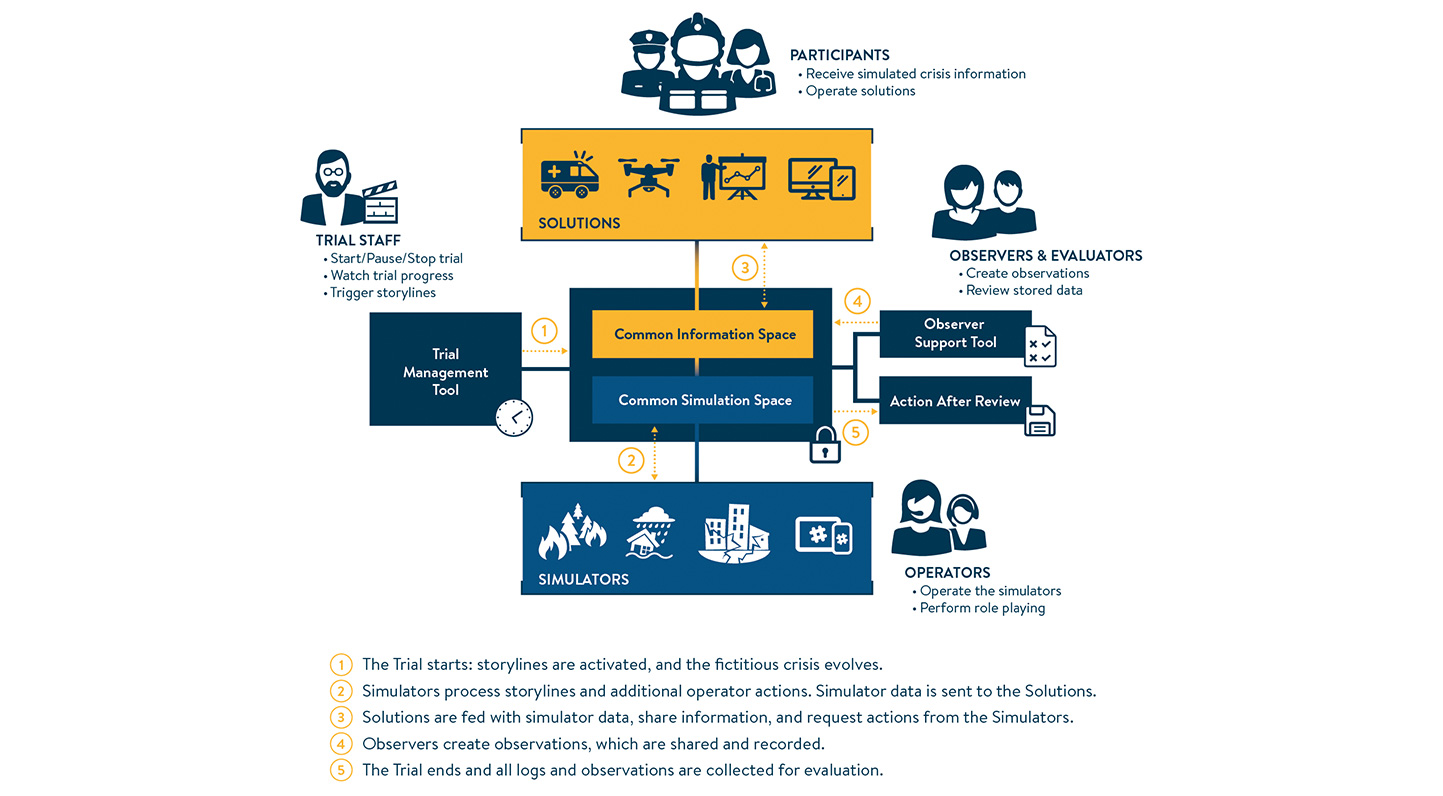In a trial, one or more innovative solutions are used by the participants and assessed in the context of a simulated crisis. For a useful assessment, the test-bed offers several tools for support and a common information space to share messages between solutions, and with legacy systems. Additionally, multiple simulators can be connected to create a realistic, yet fictive incident environment. A high-level overview is provided in the figure below.
Besides using it for trials, the same technical infrastructure and tooling can also be used in day-to-day CM practice for training, exercises and assessments of personnel and organisation in a realistic, yet fictitious controlled context.
All components are available on github.com/DRIVER-EU as open source software (MIT license), but can also be obtained from the docker hub. This means the components can be easily downloaded, installed, used and adapted free of charge.
To facilitate the execution of trials, the infrastructure has the following functionalities and interfaces available to the trial staff (i.e. trial owner, evaluation coordinator, technical coordinator, observers and assisting technicians) to prepare and execute the trial:
- The technical infrastructure allows for connecting solutions and legacy systems alike, such that they can share messages with each other inside the common information space (CIS). For instance, a drone can provide imagery or the location of victims and share them via the CIS with a common operational picture application.
- The technical infrastructure also allows to simulators to be connected together, such that they can simulate an incident and feed the simulated incident to the solutions and legacy systems. This is done by using the common simulation space (CSS) and the CIS-CSS gateways. For example, a flooding simulator can share the simulated flooding in the CIS, so the traffic simulator will not route traffic in that area. Via the CIS-CSS gateway, the simulated flood map is provided to the common operational picture application, so they will not dispatch ambulances to that area. The CIS and CSS are both using the open source publish-subscribe streaming platform, Apache
- In the trial management tool (TMT), several scenarios can be created to assess specific aspects of the trialled solutions. Scenarios consists of multiple storylines and so-called injects, i.e. messages that can either trigger an action in a simulator, a solution, or in a role-player. During execution of the trial, the trial staff uses the TMT to keep track on activation of these storylines and injects.
- In the observer support tool (OST), observer checklists and questionnaires can be created and used by observers and participants during the execution of a trial. Furthermore, the TMT can trigger new checklists and questionnaires. All answers are subsequently shared with the after-action-review tool
- The after-action-review tool (AAR) logs all checklists and questionnaires as well as all messages flowing though the CIS and CSS. This data is stored and made available for evaluation.
- The open source nature of the components and the developer documentation provided with it, make it easy for software developers to deploy these components, connect solutions and simulators to the infrastructure and create a fictive crisis scenario and observation templates. For administrators, the infrastructure also offers an admin tool to configure the infrastructure, turn on security, and an extra set of developer tools for the implementation and testing of the trial specific set-up of the technical infrastructure.
On the following pages, these components are described in more detail.

